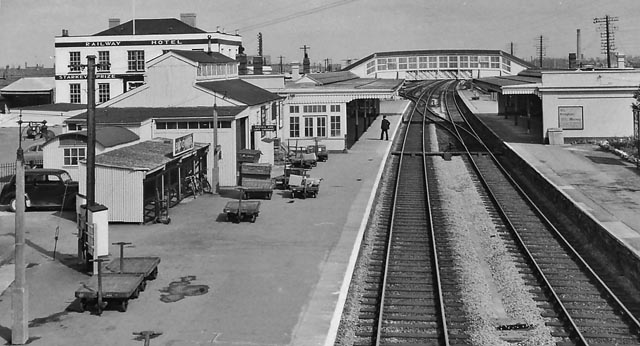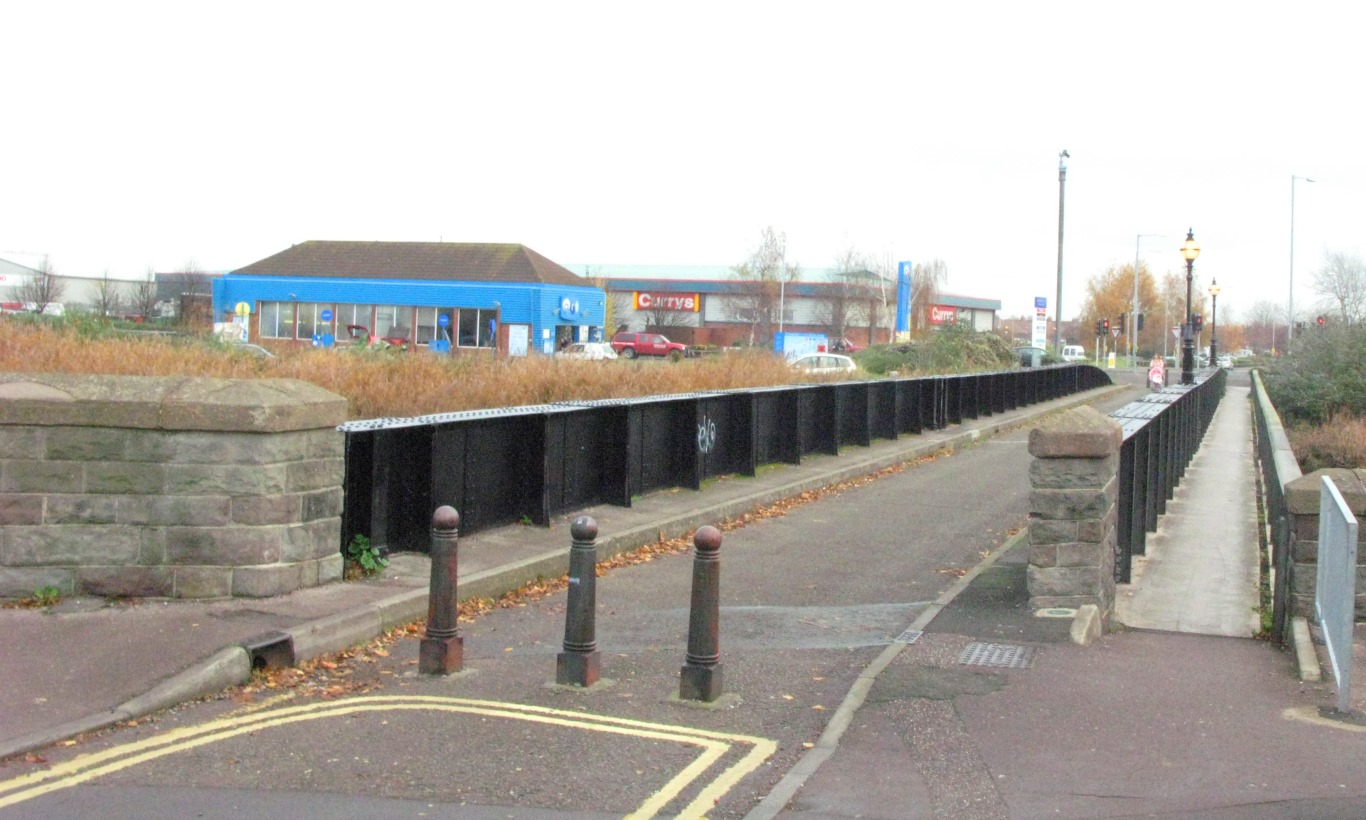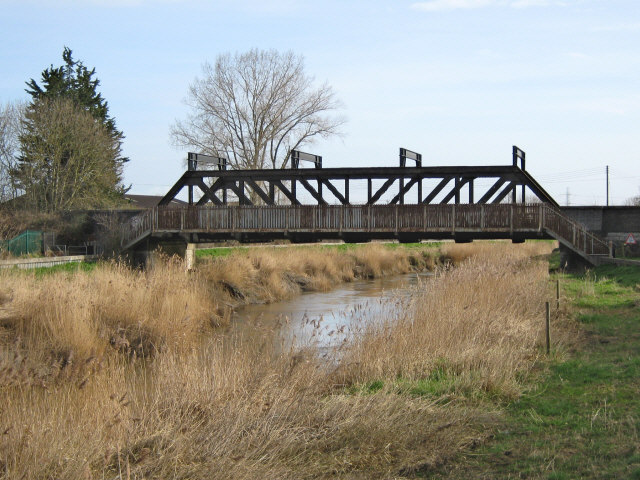Bridgwater station on:
[Wikipedia]
[Google]
[Amazon]
Bridgwater railway station serves Bridgwater in
 The railway arrived at Bridgwater on 14 June 1841 when the Bristol and Exeter Railway opened its line. This was the terminus of the line for a year while the Somerset Bridge was constructed over the River Parrett; the line was extended to
The railway arrived at Bridgwater on 14 June 1841 when the Bristol and Exeter Railway opened its line. This was the terminus of the line for a year while the Somerset Bridge was constructed over the River Parrett; the line was extended to  Following the nationalisation of the railways in 1948 stations in many towns were renamed to avoid confusion, and this station became Bridgwater Central on 26 September 1949 for a few years to distinguish it from " Bridgwater North", the former
Following the nationalisation of the railways in 1948 stations in many towns were renamed to avoid confusion, and this station became Bridgwater Central on 26 September 1949 for a few years to distinguish it from " Bridgwater North", the former
 The station buildings have survived and are kept in reasonable repair. The booking office, although modernised, retains a rare early ticket counter.
The main entrance is on the town side of the station and the platform served by trains towards
The station buildings have survived and are kept in reasonable repair. The booking office, although modernised, retains a rare early ticket counter.
The main entrance is on the town side of the station and the platform served by trains towards
 The station and all passenger services are operated by Great Western Railway. The basic weekday service pattern comprises one train in each direction each hour, most of which operate to and from and , but with fewer services on Sundays. Some additional services call during weekday peak times and more sporadically at the weekend, including to/from . Most through trains terminate at nearby Taunton, with some services extending to destinations further west such as , and .
The station and all passenger services are operated by Great Western Railway. The basic weekday service pattern comprises one train in each direction each hour, most of which operate to and from and , but with fewer services on Sundays. Some additional services call during weekday peak times and more sporadically at the weekend, including to/from . Most through trains terminate at nearby Taunton, with some services extending to destinations further west such as , and .
 The Bristol and Exeter Railway Act had allowed for a branch to the river at Bridgwater but this was never constructed. Instead, the Corporation of Bridgwater built a tramway from the station to wharves (later known as Clink Yard) on the north side of the River Parrett; this was opened in 1845 and worked by horses. It crossed both the busy Bristol Road and Church Street on
The Bristol and Exeter Railway Act had allowed for a branch to the river at Bridgwater but this was never constructed. Instead, the Corporation of Bridgwater built a tramway from the station to wharves (later known as Clink Yard) on the north side of the River Parrett; this was opened in 1845 and worked by horses. It crossed both the busy Bristol Road and Church Street on
 On the southern edge of Bridgwater the railway had to cross the River Parrett, which was still a navigable river in those days. Isambard Kingdom Brunel designed a brick bridge with a span but a rise of just , this was flatter than his famous
On the southern edge of Bridgwater the railway had to cross the River Parrett, which was still a navigable river in those days. Isambard Kingdom Brunel designed a brick bridge with a span but a rise of just , this was flatter than his famous
Station on navigable O.S. map
{{DEFAULTSORT:Bridgwater Railway Station Railway stations in Somerset Former Great Western Railway stations Railway stations in Great Britain opened in 1841 Railway stations served by Great Western Railway Grade II* listed railway stations Grade II* listed buildings in Sedgemoor Bridgwater DfT Category E stations
Somerset
( en, All The People of Somerset)
, locator_map =
, coordinates =
, region = South West England
, established_date = Ancient
, established_by =
, preceded_by =
, origin =
, lord_lieutenant_office =Lord Lieutenant of Somerset
, lord_ ...
, England
England is a country that is part of the United Kingdom. It shares land borders with Wales to its west and Scotland to its north. The Irish Sea lies northwest and the Celtic Sea to the southwest. It is separated from continental Europe b ...
. It is on the Bristol to Taunton Line
Bristol () is a city, ceremonial county and unitary authority in England. Situated on the River Avon, it is bordered by the ceremonial counties of Gloucestershire to the north and Somerset to the south. Bristol is the most populous city in S ...
and is operated by Great Western Railway. It is from the zero point at via Box.
Originally built to the designs of Isambard Kingdom Brunel
Isambard Kingdom Brunel (; 9 April 1806 – 15 September 1859) was a British civil engineer who is considered "one of the most ingenious and prolific figures in engineering history," "one of the 19th-century engineering giants," and "on ...
, the station is now a Grade II* listed building
In the United Kingdom, a listed building or listed structure is one that has been placed on one of the four statutory lists maintained by Historic England in England, Historic Environment Scotland in Scotland, in Wales, and the Northern Irel ...
.
History
 The railway arrived at Bridgwater on 14 June 1841 when the Bristol and Exeter Railway opened its line. This was the terminus of the line for a year while the Somerset Bridge was constructed over the River Parrett; the line was extended to
The railway arrived at Bridgwater on 14 June 1841 when the Bristol and Exeter Railway opened its line. This was the terminus of the line for a year while the Somerset Bridge was constructed over the River Parrett; the line was extended to Taunton
Taunton () is the county town of Somerset, England, with a 2011 population of 69,570. Its thousand-year history includes a 10th-century monastic foundation, Taunton Castle, which later became a priory. The Normans built a castle owned by the ...
on 1 June 1842.
During the period that the station was a terminus it became a focus for horse-drawn coaches that met the trains and carried their passengers onwards. An accident happened when one of these was overturned on the level crossing
A level crossing is an intersection where a railway line crosses a road, path, or (in rare situations) airport runway, at the same level, as opposed to the railway line crossing over or under using an overpass or tunnel. The term a ...
that was situated at the south end of the platforms, although the only serious injury was a bystander who broke an ankle – the coach driver and passengers were largely unscathed. A hotel was built just outside the station entrance which has since been demolished, but the houses provided for the company's staff can still be seen.
The Bristol and Exeter Railway was initially operated by the Great Western Railway but from 1 May 1849 the company operated its own trains. Coke ovens, to provide fuel for the locomotives, and workshops to build and maintain the carriages and wagons, were built to the west of the line between Bridgwater station and the river – this is the nearest station to the halfway point on the line. They closed following a fire on 25 August 1947, although by this time they were only repairing wagon sheets (i.e. canvas covers). Other local industries linked with the railway were John Browne's Brick and Tile Works, which were owned by a director of the railway and supplied materials to the Great Western and associated companies; and George Hennet
George Hennet (1799–1857) was an English railway engineer and contractor. He undertook many contracts for Isambard Kingdom Brunel's broad gauge railways in the South West of England and funded the provision of extra facilities on the South D ...
's iron works (later Bridgwater Engineering Company) which made track, signals and wagons for several different companies including atmospheric railway
An atmospheric railway uses differential air pressure to provide power for propulsion of a railway vehicle. A static power source can transmit motive power to the vehicle in this way, avoiding the necessity of carrying mobile power generating e ...
pipes for the South Devon Railway Company
The South Devon Railway Company built and operated the railway from Exeter to Plymouth and Torquay in Devon, England. It was a broad gauge railway built by Isambard Kingdom Brunel.
The line had to traverse difficult hilly terrain, and the compa ...
.
The station was improved on several occasions, such as 1882 when new roofs and a footbridge were provided. An engine shed
The motive power depot (MPD) or locomotive depot, or traction maintenance depot (TMD), is the place where locomotives are usually housed, repaired and maintained when not being used. They were originally known as "running sheds", "engine shed ...
was provided outside the carriage works in 1893.
A new connection was provided to the west of the line half a mile north of the station on 16 June 1935 to allow access to the private siding of the British Cellophane Company siding. Initially shunted by little 0-4-0ST steam locomotives, from 1969 it was home to ex-British Rail Class 03
The British Rail Class 03 locomotive was, together with the similar Class 04, one of British Railways' most successful 0-6-0 diesel-mechanical shunters. 230 were built at Doncaster and Swindon works between 1957 and 1962, and were numbered D2 ...
diesel locomotive D2133. The siding was in use for nearly 70 years but has now been disconnected.
Somerset and Dorset Joint Railway
The Somerset and Dorset Joint Railway, also known as the S&D, SDJR or S&DJR, was an English railway line connecting Bath (in north-east Somerset) and Bournemouth (now in south-east Dorset but then in Hampshire), with a branch from Evercreech ...
terminus.
The engine shed closed in July 1960, following which shunting locomotives were brought up from Taunton as required. Goods traffic at the station was withdrawn from November 1965 and, following the closure of the docks branch and Dunball Wharf in 1967, the goods yard was rationalised. Most of the sidings that served the former carriage works at the south end of the station were taken out of use by 1969.
The station forecourt was refurbished in 2019 at a cost of £1.2m. This work included a new bus stop but bus operators and rail replacement services cannot use it as it is only suitable for vehicles up to .
Description
Bristol
Bristol () is a city, ceremonial county and unitary authority in England. Situated on the River Avon, it is bordered by the ceremonial counties of Gloucestershire to the north and Somerset to the south. Bristol is the most populous city in ...
. Access to the platform for trains towards Taunton is by a footbridge.
To the north of the platforms is the goods yard on the west side of the line. The only regular goods trains to call are the Direct Rail Services
Direct Rail Services (DRS) is a rail freight company in Great Britain. As of 2022, it is one of seven publicly owned railway companies in the United Kingdom, the others being NI Railways (the passenger rail operator in Northern Ireland), LNE ...
trains that collect nuclear waste from Hinkley Point
Hinkley Point is a headland on the Bristol Channel coast of Somerset, England, north of Bridgwater and west of Burnham-on-Sea, close to the mouth of the River Parrett.
Excavations in 2014 and 2015, carried out by Cotswold Archaeology and fund ...
nuclear power station
A nuclear power plant (NPP) is a thermal power station in which the heat source is a nuclear reactor. As is typical of thermal power stations, heat is used to generate steam that drives a steam turbine connected to a generator that produces ele ...
. The loading facilities for these nuclear flask
A nuclear flask is a shipping container that is used to transport active nuclear materials between nuclear power station and spent fuel reprocessing facilities.
Each shipping container is designed to maintain its integrity under normal transport ...
s are in a secure compound on the stub of the old docks branch line. Another siding serves a warehouse but this has seen no traffic in recent years.
Services
Docks branch
 The Bristol and Exeter Railway Act had allowed for a branch to the river at Bridgwater but this was never constructed. Instead, the Corporation of Bridgwater built a tramway from the station to wharves (later known as Clink Yard) on the north side of the River Parrett; this was opened in 1845 and worked by horses. It crossed both the busy Bristol Road and Church Street on
The Bristol and Exeter Railway Act had allowed for a branch to the river at Bridgwater but this was never constructed. Instead, the Corporation of Bridgwater built a tramway from the station to wharves (later known as Clink Yard) on the north side of the River Parrett; this was opened in 1845 and worked by horses. It crossed both the busy Bristol Road and Church Street on level crossing
A level crossing is an intersection where a railway line crosses a road, path, or (in rare situations) airport runway, at the same level, as opposed to the railway line crossing over or under using an overpass or tunnel. The term a ...
s.
The railway took over the tramway in 1859 and rebuilt it for locomotive operation in 1867. In March 1871 it was extended across the river to Bridgwater Docks
The Port of Bridgwater is a port, originally located in the town of Bridgwater, Somerset, England. Created under an 1845 Act of Parliament, it extends from Brean Down to Hinkley Point in Bridgwater Bay, and parts of the rivers Parrett (to Bridg ...
, which formed the entrance to the Bridgwater and Taunton Canal and was owned by the railway company. The bridge was of an unusual design that had to move to allow ships to pass upstream at high tide; first part of the bridge was rolled aside and then the remaining section was pulled clear into the space vacated by the first.
On 27 June 1954 a new connection was made from Clink Yard to the former Somerset and Dorset Joint Railway station to allow goods traffic to reach that station following the closure of that line's Bridgwater branch.
The branch was closed on 2 January 1967. The Parrett Bridge is still in position and serves as a footbridge but no longer moves. One of the last steam locomotives from the branch, ex- Cardiff Railway 0-4-0ST 1338 was taken to Bleadon and Uphill railway station for preservation but, following the closure of the museum there, has now been moved to the Didcot Railway Centre
Didcot Railway Centre is a railway museum and preservation engineering site in Didcot, Oxfordshire, England. The site was formerly a Great Western Railway engine shed and locomotive stabling point.
Background
The founders and commercial backers ...
.
Somerset Bridge
 On the southern edge of Bridgwater the railway had to cross the River Parrett, which was still a navigable river in those days. Isambard Kingdom Brunel designed a brick bridge with a span but a rise of just , this was flatter than his famous
On the southern edge of Bridgwater the railway had to cross the River Parrett, which was still a navigable river in those days. Isambard Kingdom Brunel designed a brick bridge with a span but a rise of just , this was flatter than his famous Maidenhead Railway Bridge
Maidenhead Railway Bridge, also known as Maidenhead Viaduct and The Sounding Arch, carries the Great Western Main Line (GWML) over the River Thames between Maidenhead, Berkshire and Taplow, Buckinghamshire, England. It is a single structure o ...
across the River Thames
The River Thames ( ), known alternatively in parts as the River Isis, is a river that flows through southern England including London. At , it is the longest river entirely in England and the second-longest in the United Kingdom, after the R ...
.
Work started in 1838 and was completed in 1841. Brunel left the centering scaffold in place as the foundations were still settling but was forced to remove it in 1843 to reopen the river for navigation. He demolished the brick arch and had it replaced with a timber arch within six months, without interrupting the traffic on the railway. This was in turn replaced in 1904 by a steel girder bridge.
References
Station on navigable O.S. map
{{DEFAULTSORT:Bridgwater Railway Station Railway stations in Somerset Former Great Western Railway stations Railway stations in Great Britain opened in 1841 Railway stations served by Great Western Railway Grade II* listed railway stations Grade II* listed buildings in Sedgemoor Bridgwater DfT Category E stations